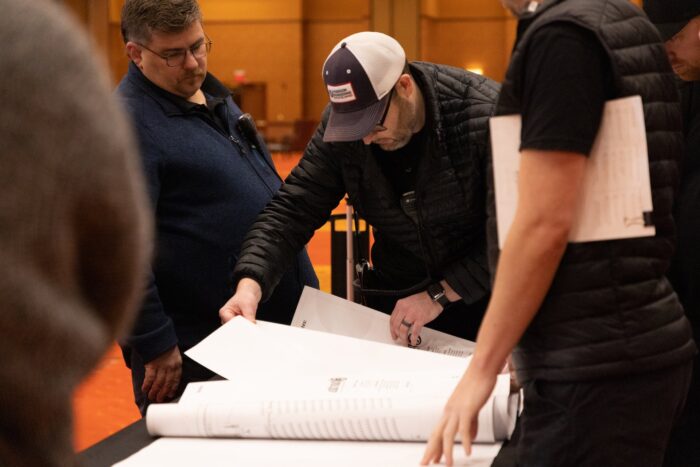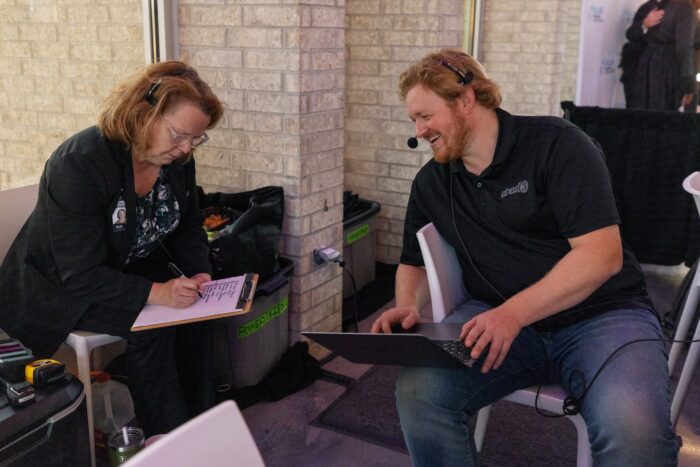For years, planning timelines for annual events were 364 days long. As soon as this year’s event ended, the event planner could let everyone begin working on next year’s event.
Corporate event planning has changed. Timelines have been sliced by 1/3rd. Decision-makers make decisions later and later. How do you stay calm when you have 1/3rd of the time? What about 1/3 of the necessary budget with 3x the work in detail changes or additions?
By the end of this article, you will have a better idea of the details you need to execute and the distractions you need to avoid. Let’s discuss how you can get 3x the work done in 1/3rd the time.

Stuck With a Short Event Planning Timeline? Here’s What To Do
If you’re reading this in the heat of a compressed timeline, immediately begin fleshing out your checklist using the guidance below.
First things first…
The best way to tackle a giant problem is to take it one detail at a time, starting with the highest priority items. For events, here are the details to get figured out the right way:
- When and where is the event (get exact times and addresses)?
- What is your budget? (Your production provider should be able to explain how you can best utilize every budget dollar.)
- Who is available (on your team, production-tech partners, venues, caterers, etc.)?
Now that your biggest details are figured out let’s work our way down to the checklist. When it comes to events, the next most important details are:
- How many attendees will be there? (Not sure? Put a rough estimate.)
- Will the event be in-person, virtual event, or hybrid event?
- Will the venue be outdoor or indoor?

Now that the broad details are noted, it is time to assemble a team. Decisions can’t be made without decision-makers. When your planning timeline gets compressed, you need power in numbers. The most efficient task force will consist of:
- Decision makers from your organization. When working on a short planning timeline, it saves time to have decision-makers directly involved.
- A quality production provider. The technical details of your event (audio, video, and lighting) are the most complex and time intensive, so let the experts take care of this. Since events are their expertise, a quality production provider can help with much more than the nerdy stuff. This is one of the most valuable details to get right when planning.
- Other event planners. Someone has dealt with your situation before, so let them walk you through it and give advice. This will cut back on dead ends and save time.
Now that your high-level details are decided and your task force is assembled, you probably feel a lot less stress., But we are not at the finish line yet. Now let’s take care of the fine details.

Don’t Forget About These Two Important Details.
- Get on people’s calendars. What’s the first thing you ask when someone inquires about you planning an event for them? What’s the date? The best professionals in the world can’t help you if they’re unavailable. Get on people’s calendars early and often. Don’t allow yourself to spiral out of control with every meeting becoming a fire drill. Set an early, middle, and late overall meeting during your three days, three weeks, or three months of planning. Get that on their calendars. Establish now that you need to place holds on presenter calendars for the day before dress rehearsal, the week before offline rehearsal, or the month before content reviews. Don’t be caught by surprise when you get declines the day before if you haven’t sent calendar invite planner requests further than the week before.
- Communicate to your audience ahead of time. How will they know if someone doesn’t tell them? Don’t make the mistake of doing all this work behind the scenes only to realize that attendees have been left in the dark. Make sure you are communicating with your internal leadership stakeholders and external vendors, but most importantly, with the audience you’re doing all of this work for in the first place. Do they know what to expect? Are you inspiring them by getting their wheels turning and thinking about the biggest day of the year?

Recognize Which Elements of Event Planning You Can Not Control
Plan B Versus “Let It Go”
Some variables are just out of your control. These things need to be listed, thought over, and then ultimately decided on whether to make a Plan B or just let go. Don’t be blindsided when these things pop up halfway through your tight timeline. Give them thought early on and either have alternatives or let them roll off your back. For example, what if a presenter gets sick? Audiences and vendors can get sick, but with presenters, the show must go on. So, decide early which presenters you need a Plan B substitute alternative for to still cover the content and which presenters can’t be replaced. So you know which ones you’d just have to let it go for.
Plan for Snowplows
What could snowplow your entire planning timeline? “Snowplow” means push, postpone, or delay, causing things to pile up.
For example, you may have your creative team draft an event logo and send it to your leader’s desk. If they don’t respond within 24hrs, every step downstream (RSVP design, print, on-screen graphics) begins to pile up. Your vendors who had 72hrs to turn around their iterations of that logo now have 48hrs. Plan for these snowplows and set expectations with the highest urgency only where needed, or risk being the boy who cried wolf. Build trust with your leadership that you need certain things quickly. Otherwise, the snowplow alternative comes into play.
Watch for Wrecking Balls
Snowplows you can plan for, wrecking balls you cannot. You can’t have a plan for everything, but you need to keep an eye out. If you’re planning an in-person event and some national news shifts travelers’ ability to come and go, that’s a wrecking ball. Moments like these are when Hybrid Events are the best. Being able to flip between 90% in-person and 10% online to vice versa is really helpful for wrecking ball situations. The same goes for date changes and postponing. It’s much simpler to adjust travel coordination for a small group of in-person live studio audience members than for the entire meeting’s attendance registration list to get rebooked on flights.
Keep Your Eyes on the Prize
Speaking of letting go, you aren’t going to be able to hold onto everything. It’s not practical or healthy, and your people need you healthy for the big day. You might have to let go of some details, like the exact color of the balloons or the font of the invite. Otherwise, you risk taking your eye off the prize. Keep your eyes on the overall goal, a great event for attendees and/or vendors/sponsors.
You have to define and get alignment from leadership on what the prize is, and in some cases, that might mean exact colors or serifs. But in most cases, the main thing is keeping “the main thing” the main thing.

Planning Ahead is the Key to Staying Calm
The event industry is full of incredible stories of crews overcoming the unfathomable in the name of “the show must go on.” In our industry, there is a universal appreciation for those who can stay calm under pressure. Hopefully, these concepts have inspired you to remain calm and use checklists to plan more efficiently. When time is ticking, nothing can be done to gain more of it, but strategizing and taking action on checklist items can help bring peace to your future self. Don’t wait until tomorrow to do what could be done today.
